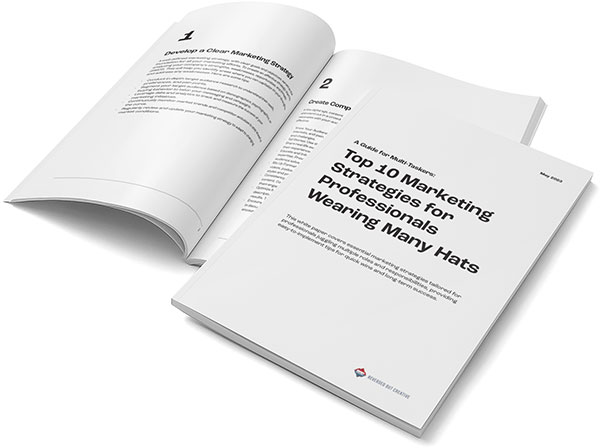
Marketing helps an organization meet its long-term goals for growth, profitability, revenue, influence, and so on. Marketing is there to find, satisfy, and keep customers. There are a lot of different tools that marketers use to do this job. The marketing plan is the document that marketing managers and teams use to layout the goals they want to achieve and the steps they will take to get there. A well-thought-out 5 elements of a marketing strategy shows the big picture of what is going on inside and outside of an organization. It then recommends strategies and tactics to help the organization take advantage of available opportunities and resources to reach its goals.
After looking at the marketing environment, the plan then suggests strategies and tactics. When 5 elements of a marketing plan are done carefully and skillfully, it helps marketers not only make the case for what they want to do, but it also helps everyone in the company see the same picture of what’s going on and how people and resources will work together to achieve that picture.
What is a marketing plan?
Think of key elements in marketing planning like a map for how to market. The long-term goals are where you’re going. The strategy, tactics, and marketing mix are the way to get to where you want to get to. Details like major milestones, how well things are going, tasks, deadlines, and budgets are what actually move things. Every time you do a review or make a change, it’s like GPS-driven navigation with real-time traffic and weather.
The parts of a marketing plan are more important than how the marketing plan looks or how it is written. It can be as formal as a marketing plan document with sections, or it can just be a list of things that make up a marketing plan, like bullet points, tables, charts, budgets, and explanations.
In order to have a good marketing plan, you need to know what to look for.
The value of a marketing plan comes from how well it is done, not how good it is. You can judge the value of the marketing plan by the decisions that follow, the business it brings in, and how well it’s done. A brilliant marketing plan that isn’t done is worth far less than a bad marketing plan that is done.
As a result, key elements in marketing planning have a successful marketing strategy that includes a budget, schedule, and other things that work well for the company. It’s also very important that the people who will be carrying out the plan look at the results often, make changes as the results require, and keep the plan up to date.
A successful marketing strategy is one that can be proven to be effective. It’s possible to measure anything from sales to leads to pitches to store visitors to answers and emails to likes, following, subscriptions, and presentations.
Contact Us
At Reversed Out Creative, we understand the challenges and opportunities presented by AI disruption. Our team of experts specializes in web design, SEO, graphic design, and digital marketing services. Reach out to us through our contact form to learn more about navigating the evolving job market and embracing the potential of AI. Together, let’s shape a future that combines human ingenuity with the power of AI.
- Market Research For Proper Foundation of Marketing Strategy
- The Market You Want to Reach
- The Goals
- The Marketing Strategy
- Make sure you have Enough Money
A Marketing Plan has Five Main Parts:
It can be hard to do market research at first, but 5 elements of a marketing plan will pay off for years to come. This should be the biggest part of your planning. Too much research and not enough action can negatively affect your business.
1. Market Research For Proper Foundation of Marketing Strategy
- The size of the market – This is very important for businesses in your area. The market for your product or service is about how big it is. People who sell cars: how many households in your area have a base income of more than? Do people buy new cars in your area? Current sales statistics in your field, such as average prices, average turnovers, and so on.
- Changes in the market and seasonality – Are your goods and services seasonal? When do people buy more and when less? This is very important when you’re planning your advertising.
- Analyzing the competition – They don’t know. How do they do their marketing? They could do things that could hurt your business. They have a different product or service than the rest.
- A product or service analysis – In the market, how does your product or service stack up against the rest? What are the things that make you unique? How does your product or service make itself different from other things on the market? Are there any small things you could change to make a quick change?
2. The Market You Want to Reach
If you don’t know who your target market is, you could end up shooting in the dark. This is a very important part of any kind of marketing.
A good way to figure out who your target market is is to look at the people you already have.
When you figure out who your target market is, look at the following data:
- What is the average age range of people who buy from your company?
- Gender: Is your customer male or female, or a combination of both?
- Language: What kind of language do your clients speak?
- Customer: What is their age range? For example, they could be students at college or parents who are taking care of their kids.
3. The Goals
Setting the right goals will help you figure out which marketing strategies and budgets are best for you. When setting marketing goals, you should think about the goals of your business or organization first.
- There are business goals – Goals give businesses direction and milestones. Without them, it would be hard for businesses to grow and expand. If you run a business, your goals could be to make more money, get more customers, make more customers happy, make more customers last longer, and so on. Knowing your business goals will help you set the right marketing goals that will help your business.
- Marketers want to reach their goals – There is one thing that all good marketing goals have in common: they can be seen and tracked. You can’t always tell how your marketing efforts are working because of the way it works. There are a lot of benefits to digital marketing, but there are also a lot of benefits that we can’t see. As a business owner or manager, your marketing goals might be to make your brand more well known, get more sales leads, and so on.
4. The Marketing Strategy
The next stage is to develop a marketing plan after conducting market research, identifying your target audience, and determining your marketing objectives. Make an inventory of the marketing and promotional tactics you’d want to implement.
Knowing a few is a good idea:
- You can advertise in print media, such as newspapers and magazines
- Using social media to advertise
- Ads that appear on the Google search engine
- Issuing statements to the media and gaining attention
- People can be sent a letter, pamphlet, or brochure as part of a direct marketing campaign.
- To attend a wide variety of trade exhibitions.
- Phone or contact the folks who could be interested in what you’re selling.
Here are a few more techniques:
Based on the nature of your company, you may be able to utilize different offer tactics, such as seasonal offers, discounts or additional advantages. You may use these tactics to achieve your company’s objectives as well.
Referrals are often the quickest and most effective approach to closing a deal. You may notice immediate results from your marketing efforts if you can get more referrals.
Unconventional methods may also be of interest to a wider audience. If you want to catch people’s attention, you may use things like flash mobs, product demos, or even stickers in public locations.
5. Make sure you have Enough Money
One of the most important parts of your marketing plan is going to be how much money you have. The size of your marketing activities will be based on how much money you have to spend on different projects.
Conclusion
Finally, you may advertise your business using email, social media, marketing, blog posts, direct mail, and more. You need a strategy if you want to find out how to sell your company most effectively. It’s common for business owners to create a marketing strategy and then put it aside. That’s it for them.
When it comes to your business, your key elements in marketing planning are like a map. It has to be inspected often to see whether any changes have occurred. As a result of this information, you have a better understanding of the 5 elements of a marketing plan. Go ahead and get to work on your venture.
We, at ReversedOut Creative, offer customized marketing services for all businesses. If you are looking for someone who can help you achieve your marketing goals, simply contact us and we will be happy to assist.
Next Article: Tips to Improve Organic Clickthrough for Your Content | Content Marketing Tips
©2025 Reversed Out LLC. All rights reserved. Privacy Policy.


